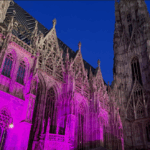Una delle tendenze in medicina estetica è la richiesta di trattamenti medico-estetici non invasivi che però al tempo stesso siano efficaci e perdurino nel tempo. La procedura non chirurgica EndoliftX assolve in modo completo a queste due richieste

Prodotto da Eufoton®, azienda di Trieste con 25 anni di esperienza, EndoliftX ® è un trattamento laser medicale eseguito con LASEmaR® 1500 approvato dalla FDA per la liposuzione assistita. La sua azione è quella di stimolare gli strati cutanei profondi e superficiali, retrarre i setti connettivali e favorire la formazione di nuovo collagene dermico. Il risultato è immediato, la tecnologia contemporaneamente rispristina ed eleva il supporto dei tessuti facciali e corporei, assicurando il massimo effetto “tightening”. La lunghezza d’onda laser selettiva mediante le nuove microfibre permette anche di eseguire la distruzione selettiva del grasso localizzato, risparmiando i vasi linfatici e i vasi sanguigni, grazie a un approccio più mirato. La procedura non è dolorosa, non richiede downtime e i risultati sono immediati, migliorano nel corso del tempo e persistono per quasi tre anni.


“EndoliftX nasce da una laserlipolisi chirurgica che è stata modificata per un uso ambulatoriale,la tecnica ha un DNA chirurgico anche se la gestione è medicale – spiega il dottor Riccardo Forte, medico e chirurgo estetico a Como e a Lugano -. Il trattamento richiede una leggera anestesia per non sentire fastidio quando si interviene con le microfibre ottiche, che hanno uno spessore che va da 0,2 a 0,6 millimetri, sono sottili come un capello e si comportano come un ago. Quando inseriamo sotto cute la microfibra ottica, la luce rossa ci guida durante il trattamento, più sarà brillante più sarà superficiale, più sarà sfumata più stiamo andando in profondità. Questo è molto importante perché la fibra ottica deve essere sempre applicata superficialmente, quasi radente alla pelle e al grasso superficiale. Non dobbiamo andare in profondità perché c’è il rischio di incontrare strutture nobili, come arterie e nervi. Le zone di elezione dove eseguire il trattamento sono: il profilo mandibolare, il doppio mento, l’interno cosce, le maniglie dell’amore. Le zone secondarie: la palpebra inferiore, le braccia, la culotte de cheval, la zona trocanterica dove c’è più cellulite. La durata del trattamento per il viso varia dai 30-45 minuti, per il corpo dai 60 ai 90 minuti, considerando le due zone: fianchi, ginocchia, glutei, quindi il tempo raddoppia. Non c’è downtime, il paziente può riprendere da subito la sua attività sociale e non si cono controindicazioni, ci si può sottoporre a qualunque età. I risultati sono immediati, l’effetto tightening è sorprendente, si nota subito il cambiamento dei volumi, la riduzione del grasso, la pelle si ricompatta e si riposiziona meglio sui muscoli. Nei mesi successivi al trattamento avverrà la neocollagenesi con produzione di collagene sia di tipo I che tipo III, mentre le vecchie fibre di collagene verranno gradualmente sostituite dalle nuove determinando una rigenerazione profonda della pelle. I risultati sono molto duraturi, in alcuni casi fino a tre anni”.
Nel caso si dovessero rinforzare i risultati, EndoliftX può essere abbinata anche ad altri trattamenti medico-estetici quali la tecnologia frazionale Lightscan™ disponibile nella medesima apparecchiatura LASEmaR® 1500 di Eufoton, indicata per trattare tutti i segni dell’età in modo non invasivo eliminando rughe, discromie e lassità cutanee, ottenendo risultati visibili senza lunghi tempi di recupero; i biorivitalizzanti iniettabili, perché aiutano il processo di rigenerazione del collagene; gli ultrasuoni focalizzati, particolarmente indicati in caso di ptosi severa; e la radiofrequenza frazionata.













